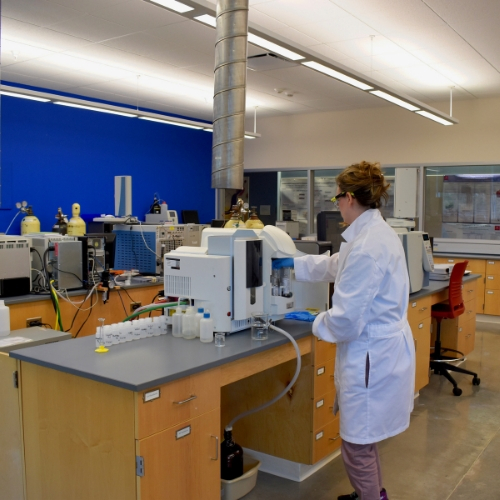Chemistry Students Help with Local Lead Issue
Chemistry professor, Dr. Samantha Radford, and two of her classes, Environmental Chemistry and Human Toxicology are working with the community to bring more awareness to the under-reported issue of lead exposure in Central Pennsylvania. Several cities in Pennsylvania, including Altoona, have a higher children’s lead exposure rate than that of Flint Michigan, even during their recent lead crisis. The city of Altoona ranks second worst in the state with an alarming 20% of children having elevated lead blood levels.
Dr. Radford worked with the Saint Francis University Center for Service and Learning to teach these classes as community-engaged (CE) courses. CE courses reflect the Carnegie Foundation's tenants of community engagement. In CE courses, students apply what they are learning in class to meet a community need, guided by their professor and collaborating with a community partner.

Students worked with members in the community to run lead analysis on the homeowner’s water, paint, and soil. Samples were taken from the houses were analyzed in the chemistry lab. 53% of the paint samples tested had higher than the maximum level of lead permitted in paint. Of the soil samples tested, 74% were above the normal levels. Of the eight water samples collected, all had a concentration of lead that was below the EPA action level.
These results reflect what we already know about lead exposure in Pennsylvania. According to the Pennsylvania Department of Health, the primary source for childhood lead poisoning is exposure to lead-based paint through paint chips and dust from homes built before 1978, and from local industry (past and present) polluting the air and soil. Lead water pipes, like what lead to the Flint water crisis, are less of an issue here in Pennsylvania.
If the homeowner’s lead results were high and considered unsafe, the class informed the families of a possible plan of action to reduce their lead levels. The results of this service project were presented to SFU members, the community, and the American Chemical Society (ACS) annual meeting in New Orleans during March of 2018.
.jpg)
“Planning when to drive to the community on our own time outside of an allotted lab slot to take lead samples, creating digestion and analysis methods for lead samples, and taking knowledge outside of the classroom to benefit the community were some of the most impactful leadership opportunities myself and my student colleagues were able to perform as students at SFU,” reports Chemistry major, Paul Kasunic. “This project was a high mark in my academic career and showed me my capabilities as a chemistry student “
Dr. Radford hopes to continue this course in future semesters. She says, “while difficult, there is something valuable to students learning that environmental problems are complex and expensive, with no easy fix.” As a follow-up for two local households with an elevated lead level, Dr. Radford’s Human Toxicology students went back as another Community Engaged course project to repaint a garage and install a raised garden bed in order to offer some remediation for the community participants.
For more information from the EPA on how to protect your family from lead in your home, download their PDF brochure.